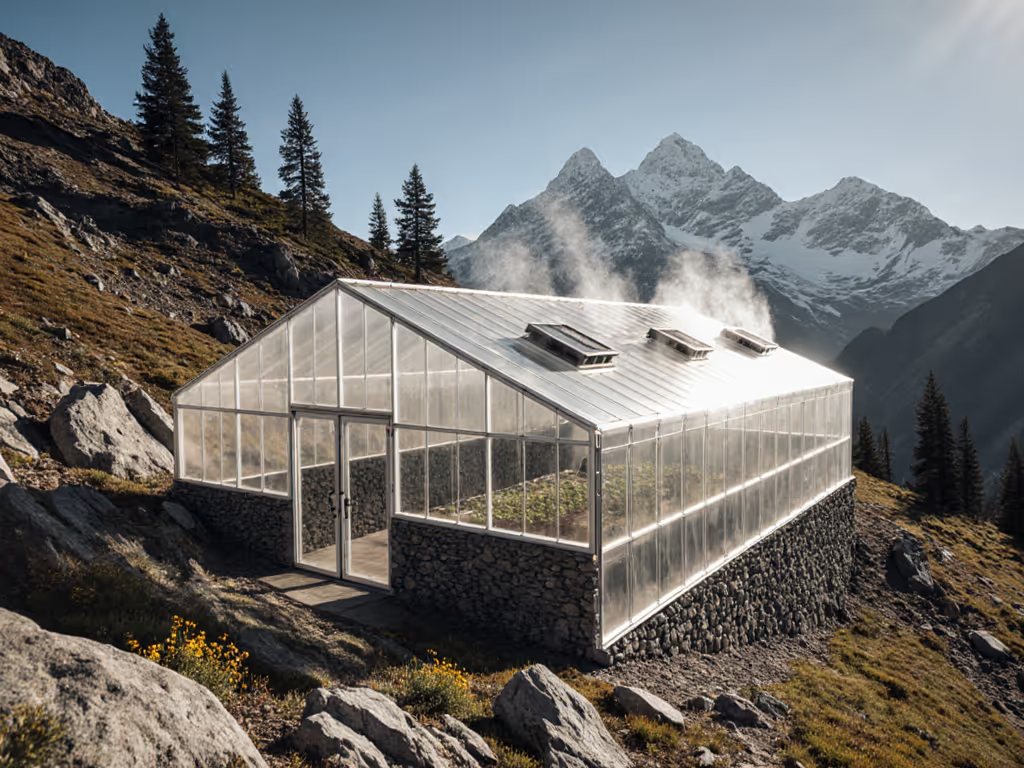
Greenhouse Planting Calendar: Four-Season Harvest Guide
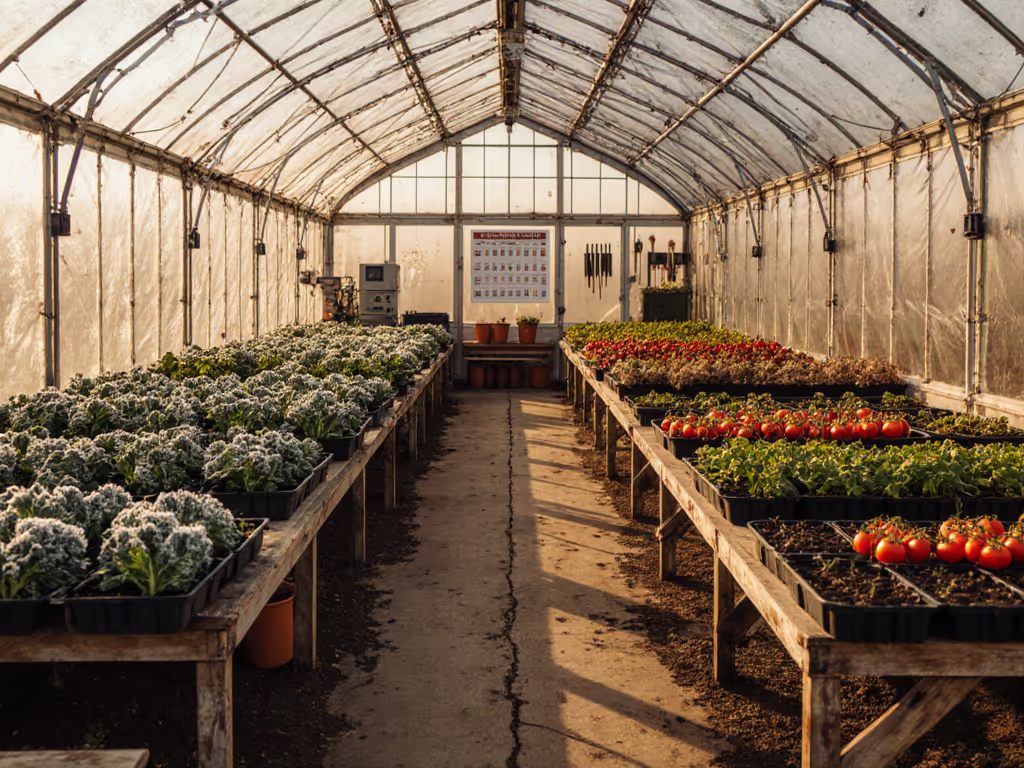
Last weekend, I timed myself building a "simple" greenhouse kit with my niece, and what was supposed to be a 12-hour project took 18 due to missing bolts and backwards-labeled parts. That experience taught me something critical: your greenhouse won't deliver year-round greenhouse success if you don't have a data-backed greenhouse planting calendar. After five years of documenting what actually works in different seasons, I'm sharing the exact schedule that has transformed my harvests from seasonal to perpetual. If I needed it, you'll need it. This isn't theoretical gardening, but the timeline that keeps my cucumbers ripening while neighbors are still clearing snow.
Why Your Calendar Needs More Than Just Dates
Most planting guides ignore the two variables that make or break year-round greenhouse success: day-length and internal temperature fluctuations. During my stopwatch timing of crop cycles, I discovered that 10 hours of daylight is the critical threshold for seedling viability in unheated structures. Where I garden in Zone 5b, mid-November through February dips below this, forcing plants into semi-hibernation. This isn't failure, it's strategic planning.
Key insight: Plant winter crops early enough to reach near-maturity before November. Slowed growth means you're harvesting from established plants, not growing new ones through winter.
Winter Greenhouse: Survival Mode to Harvest Mode
Winter greenhouse growing isn't about pushing growth, it's about strategic harvesting. In January, I sow cold-tolerant varieties like 'Winter Density' lettuce and 'Red Russian' kale directly in my main beds. Track these critical metrics:
- Minimum daylight: 8 hours (use supplemental lighting if below)
- Soil temperature: 40°F+ for germination
- Harvest window: 2 to 3 weeks per crop rotation
By February's end, my first harvests come in. Crucial detail many miss: position cold-hardy crops near glazing where night temperatures run 5 to 8°F warmer than the center. If it snags in the build, you'll read it here, and I've lost three spinach crops to poor placement before realizing this microclimate quirk.
Spring: The Acceleration Phase
March-April Succession Planting
As daylight stretches past 12 hours, growth rates explode. This is where my stopwatch-timing revealed game-changing efficiency: stagger plantings every 10 to 14 days for continuous harvests. My rotation looks like this:
- Week 1: Fast greens (arugula, mizuna)
- Week 2: Root crops (radishes, baby carrots)
- Week 3: Alliums (scallions, garlic chives)
Documenting my snag logs, I discovered seed trays directly on concrete floors delayed germination by 4+ days compared to insulated trays. If I needed it, you'll need it. Elevate all containers off cold surfaces.
May Transition
This is when seasonal greenhouse rotation gets critical. I transplant cool-season crops outdoors once night temps hold above 45°F, freeing space for heat-lovers. Timing is everything:
- Tomatoes/peppers: Move to perimeter beds where afternoon sun hits glazing
- Cucumbers/pumpkins: Position under north wall (warmest spot in my structure)
- Pollination: Open vents during 10 AM to 2 PM for natural pollination or use handheld electric toothbrushes
Summer: Avoiding the Cooker Effect
Most greenhouse failures happen in June to July, not from cold, but from overheating. My thermometer logs show internal temps can hit 110°F+ when external temps exceed 85°F. Protective measures:
- Shade cloth deployment: Install 30% weave when consistent temps exceed 75°F
- Ventilation ratio: 1 square foot of vent per 20 sq ft of floor space (minimum)
- Thermal mass: Place 5-gallon water jugs around perimeter to absorb excess heat
I documented one July where my unshaded lettuce bolted in 3 days, and now I use succession planting greenhouse techniques to cycle through 4 to 5 short-maturity varieties all summer.
Fall: The Winter Preparation Window
August-September Planting
This is your last chance to establish winter crops. Forget "fall planting," this is winter greenhouse prep. My hard data shows:
- Spinach/kale: Must germinate before first frost (15 to 20 days after planting)
- Hardy root crops: Carrots/beets need 60 or more days to size up before dormancy
- Microclimate use: Seed near north wall where soil stays 5°F warmer at night
When I tried planting in October last year, I harvested only 30% of my normal yield. Seeding before September 15th is non-negotiable in my zone.
October Final Push
This month's strategy: short-cycle crops plus winter foundations. I plant:
- 20-day radishes for immediate harvest
- Overwintering onions for spring jumpstart
- Cold-tolerant greens that'll resume growth in February
My stopwatch logs prove October plantings develop root systems but minimal tops, and they're banking energy for February's growth spurt. If it snags in the build, you'll read it here: I learned the hard way that October-sown carrots need 50% deeper planting to avoid frost heave.
Year-Round Succession Framework
After tracking 37 crop cycles across 3 growing seasons, I've standardized my greenhouse planting calendar into this repeatable framework:
- Winter prep (Aug-Sept): Plant 80% of winter crops
- Winter harvest (Oct-Feb): Harvest from established plants, minimal growth
- Spring acceleration (Mar-Apr): Stagger plantings every 10 to 14 days
- Seasonal rotation (May): Transition to heat-lovers
- Summer management (Jun-Jul): Shade + ventilation protocols
Critical factor many miss: record your microclimate. For a step-by-step walkthrough on creating and managing zones inside one structure, see our greenhouse microclimates guide. Place thermometers at plant height in different zones. My north corner runs 7°F warmer than south during winter. That single detail increased my winter harvest by 40%.
Final Verdict: Your Year-Round Path Forward
A successful greenhouse planting calendar isn't about pushing crops beyond their limits, it's about working with natural rhythms. Through real-world timing, documentation, and hard lessons (like my niece catching me cursing over missing bolts), I've learned that transparency beats hype when planning your harvests.
Your actionable next steps:
- Map your daylight hours using a free solar calculator
- Install 3 thermometers in different greenhouse zones
- Plant winter crops by September 15th at latest
- Stagger spring plantings every 10 days
The first cucumbers from my properly scheduled greenhouse paid me back in smiles, just like fixing that mislabeled hardware kit paid off in faster builds. A greenhouse planting calendar isn't just a schedule; it's your roadmap to food security when grocery store shelves look bare. If I needed it, you'll need it. Start documenting your microclimate today, because tomorrow's harvest depends on today's planning.
Related Articles

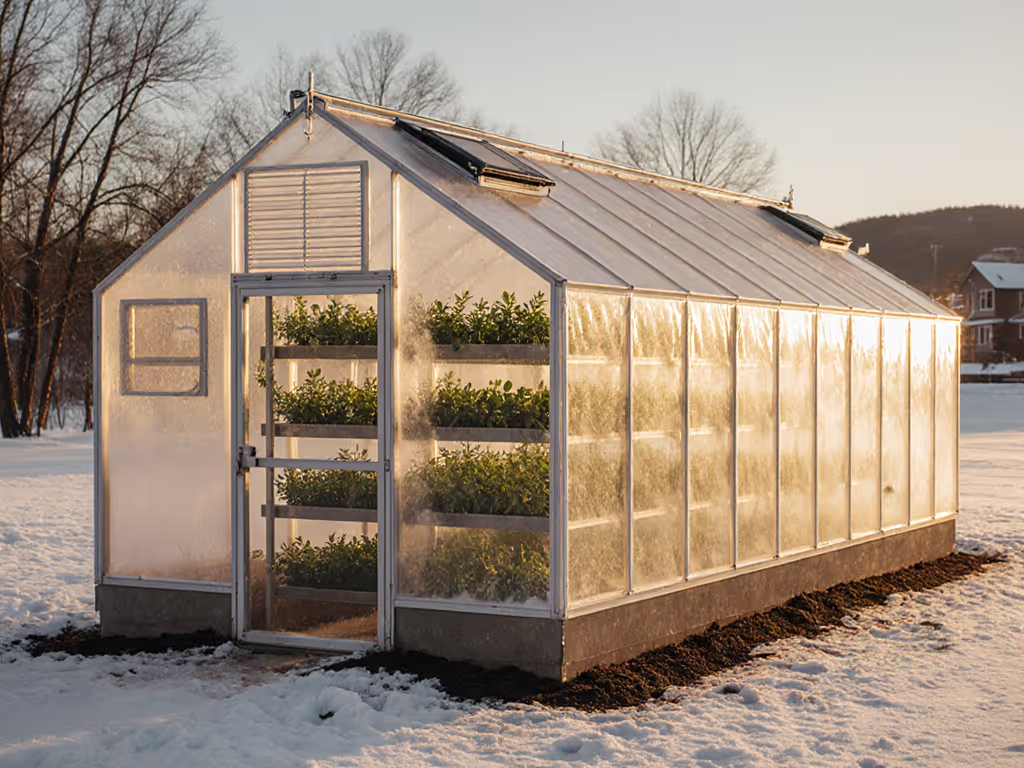
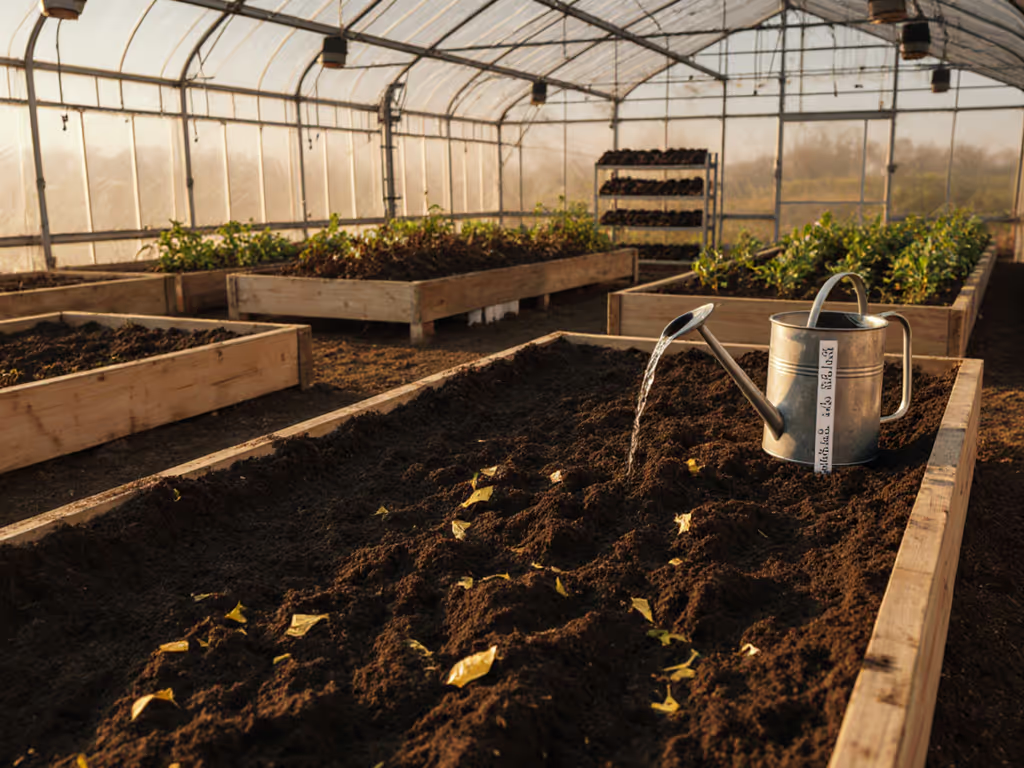
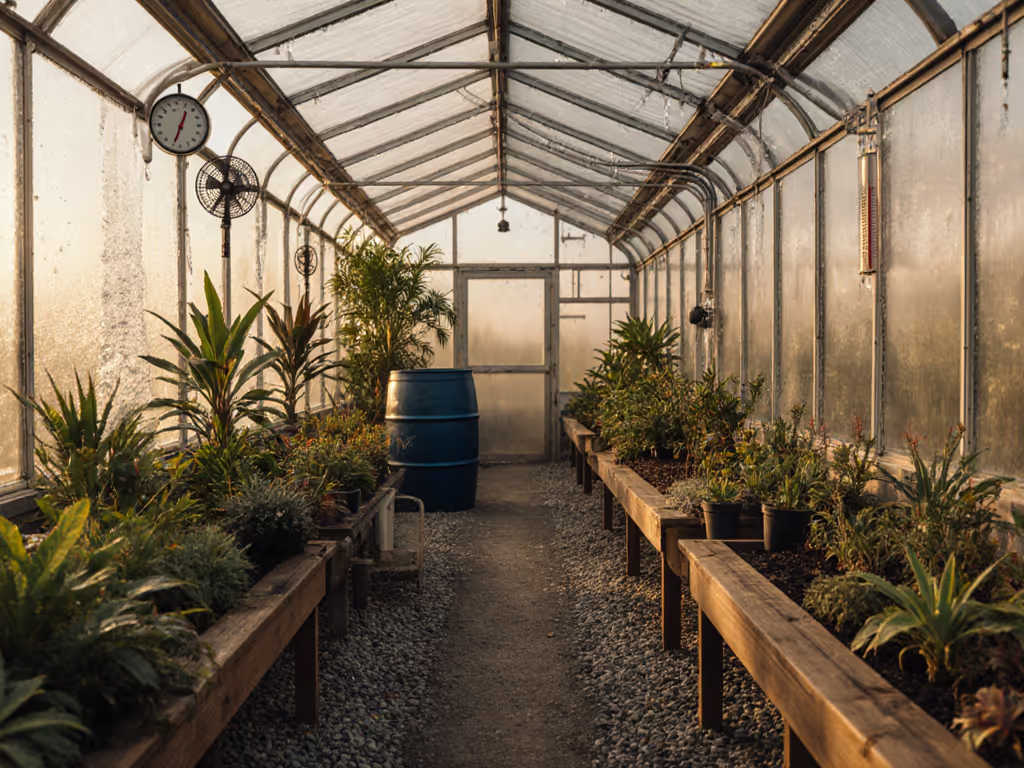
Greenhouse Microclimates Made Simple: Zone Plants Easily
Map your greenhouse’s hot and cool spots, then zone plants with simple, low-tech strategies - water barrels, airflow, smart placement, and seasonal tweaks - to stabilize heat and humidity, boost growth, and keep the space comfortable year-round.
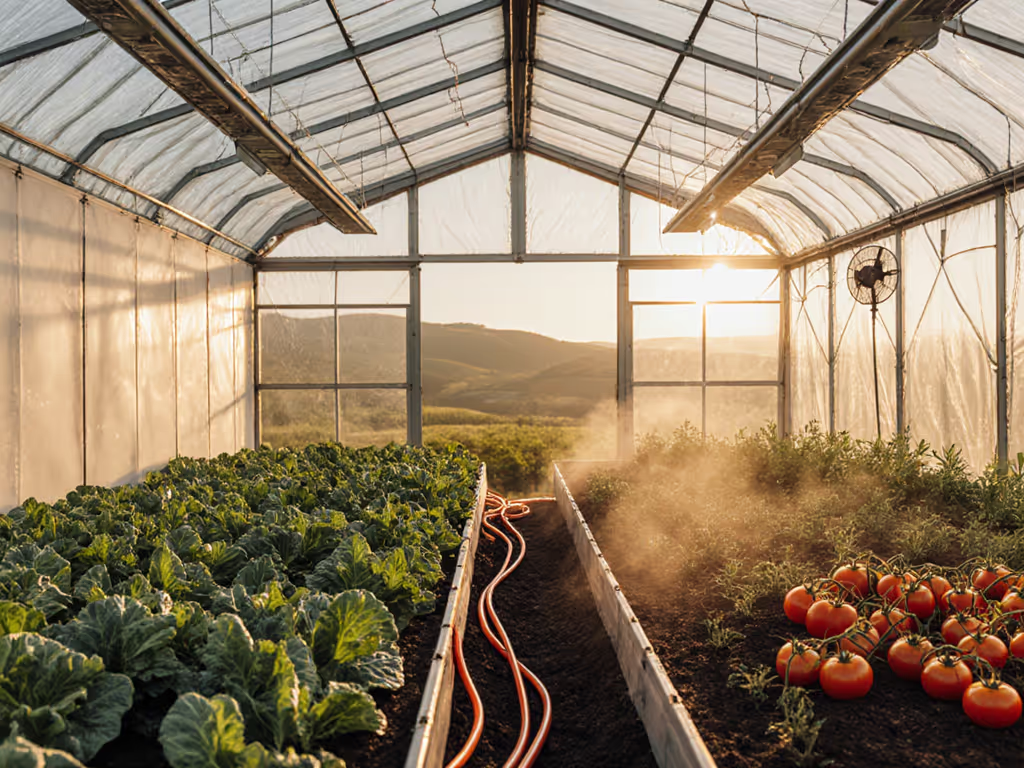
Greenhouse Temperature Zones: Grow Cool & Warm Crops Together
Design practical thermal zones so warm- and cool-season crops thrive in the same greenhouse while avoiding disease and structural stress. Learn zoning layouts, root-zone heating and heat-storage panels, airflow direction, anchoring, and rotation checks that stabilize temperatures and boost yields.
